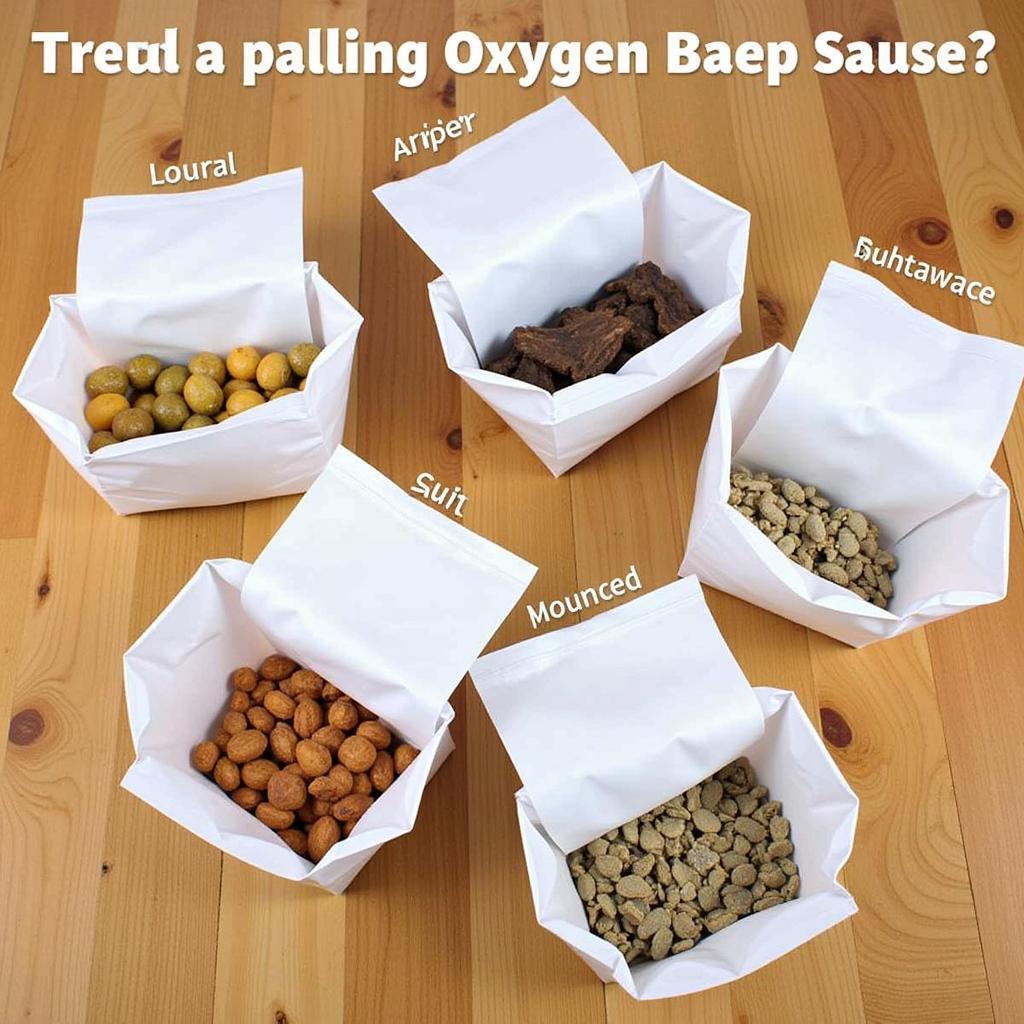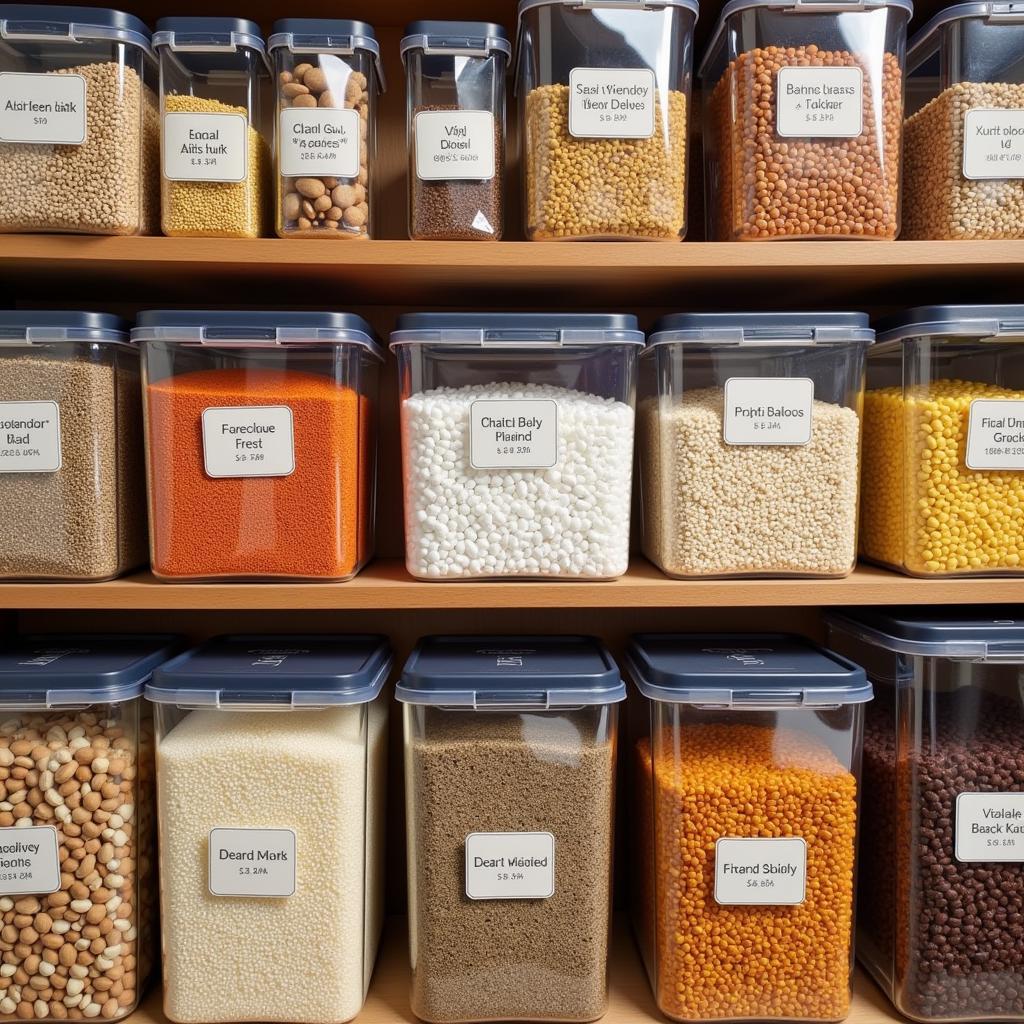Stocking up on Bulk Food For Long Term Storage is a smart strategy for preparedness and can even save you money in the long run. Whether you’re preparing for emergencies, aiming for self-sufficiency, or simply looking to buy in bulk to save on grocery bills, understanding the best methods for long-term food storage is crucial. This guide will cover everything you need to know about selecting, packaging, and storing bulk food to ensure it remains safe and nutritious for years to come.
Choosing the Right Bulk Food for Long Term Storage
Selecting the right foods is the foundation of successful long-term storage. Prioritize non-perishable items with a long shelf life. Think dried goods like rice, beans, lentils, and oats. Dehydrated and freeze-dried fruits and vegetables are also excellent choices, offering vital nutrients and variety to your stockpile. Don’t forget about protein sources like nuts, seeds, and powdered milk. Consider your dietary needs and preferences when choosing what to store. After all, having a well-stocked pantry doesn’t mean sacrificing enjoyment.
Remember to check the expiration dates even on long-lasting staples and rotate your stock regularly, using the older items before they expire and replenishing with fresh supplies. Think of it like a library – first in, first out. This “first in, first out” system is essential for maintaining the quality and freshness of your bulk food storage. You can even integrate these items into your regular meals, making long-term food storage a seamless part of your everyday life. It’s like having a secret weapon against grocery store inflation! Want to make your own baby food in bulk? Check out these baby food freezer trays for convenient portioning and storage.
Packaging Your Bulk Food for Optimal Preservation
Proper packaging is just as important as choosing the right foods. Oxygen and moisture are the enemies of long-term food storage, leading to spoilage and nutrient degradation. Invest in high-quality, airtight containers. Mylar bags with oxygen absorbers are a popular choice for dry goods, effectively removing oxygen and sealing in freshness. Vacuum sealing is another excellent option, especially for preserving dried fruits, vegetables, and nuts. For items like powdered milk or dehydrated meals, consider refillable food pouches for easy storage and dispensing.
Label everything clearly with the contents and date of packaging. This makes it easy to identify and rotate your stock effectively. A well-organized storage system will not only save you time and effort but also prevent food waste. Think about how frustrating it would be to have a treasure trove of food but not be able to find what you need when you need it. Proper labeling and organization transform your bulk food storage into a user-friendly resource rather than a chaotic jumble.
 Mylar bags with oxygen absorbers for long-term food storage
Mylar bags with oxygen absorbers for long-term food storage
Creating the Perfect Storage Environment
Where you store your bulk food significantly impacts its longevity. Choose a cool, dark, and dry location. Avoid areas with fluctuating temperatures or direct sunlight. A basement, pantry, or cool closet are ideal choices. Proper temperature control helps prevent spoilage and maintains the nutritional value of your stored food. Remember, even slight temperature fluctuations can accelerate the degradation process, so consistency is key. Building your own food fortress ensures optimal conditions for your long-term food storage.
Think about your storage space like a haven for your precious food reserves. Protect it from pests by using sealed containers and regularly inspecting the area for signs of infestation. Think of it as creating a food fortress, safeguarding your supplies against any potential threats. This meticulous approach ensures that your hard-earned supplies remain safe and readily available when needed.
How Long Does Bulk Food Really Last?
The shelf life of bulk food varies depending on the type of food and storage methods. Properly stored dried goods like rice and beans can last for several years, while dehydrated or freeze-dried foods can last even longer. Diamond dog food, though not for human consumption, also offers bulk options for your furry friends.
 Organized shelves with bulk food stored in airtight containers
Organized shelves with bulk food stored in airtight containers
Conclusion
Building a supply of bulk food for long term storage is an investment in your future. It provides peace of mind knowing you have provisions in case of emergencies and helps you save money by buying in bulk. By choosing the right foods, packaging them correctly, and storing them in an optimal environment, you can ensure your long-term food storage remains safe, nutritious, and ready when you need it most. If you are looking for readily available, long-lasting options, consider dehydrated survival food.
FAQ
-
What are the best containers for bulk food storage? Airtight containers like Mylar bags, vacuum-sealed bags, and high-quality plastic containers are ideal.
-
How do I prevent pests in my food storage? Store food in sealed containers and regularly inspect your storage area for signs of infestation.
-
What is the ideal temperature for long-term food storage? A cool, dark, and dry location with a stable temperature is best.
-
How long can I store dried beans? Properly stored dried beans can last for several years.
-
What are the benefits of long-term food storage? Preparedness for emergencies, cost savings, and self-sufficiency are key benefits.
-
Where can I find high-quality bulk food for purchase? Reputable online retailers and local bulk food stores are good options.
-
How often should I rotate my food storage? Regularly rotate your stock, using the oldest items first and replenishing with fresh supplies.
For further assistance, please contact us at Phone Number: 02437655121, Email: minacones@gmail.com Or visit our address: 3PGH+8R9, ĐT70A, thôn Trung, Bắc Từ Liêm, Hà Nội, Việt Nam. We have a 24/7 customer service team.